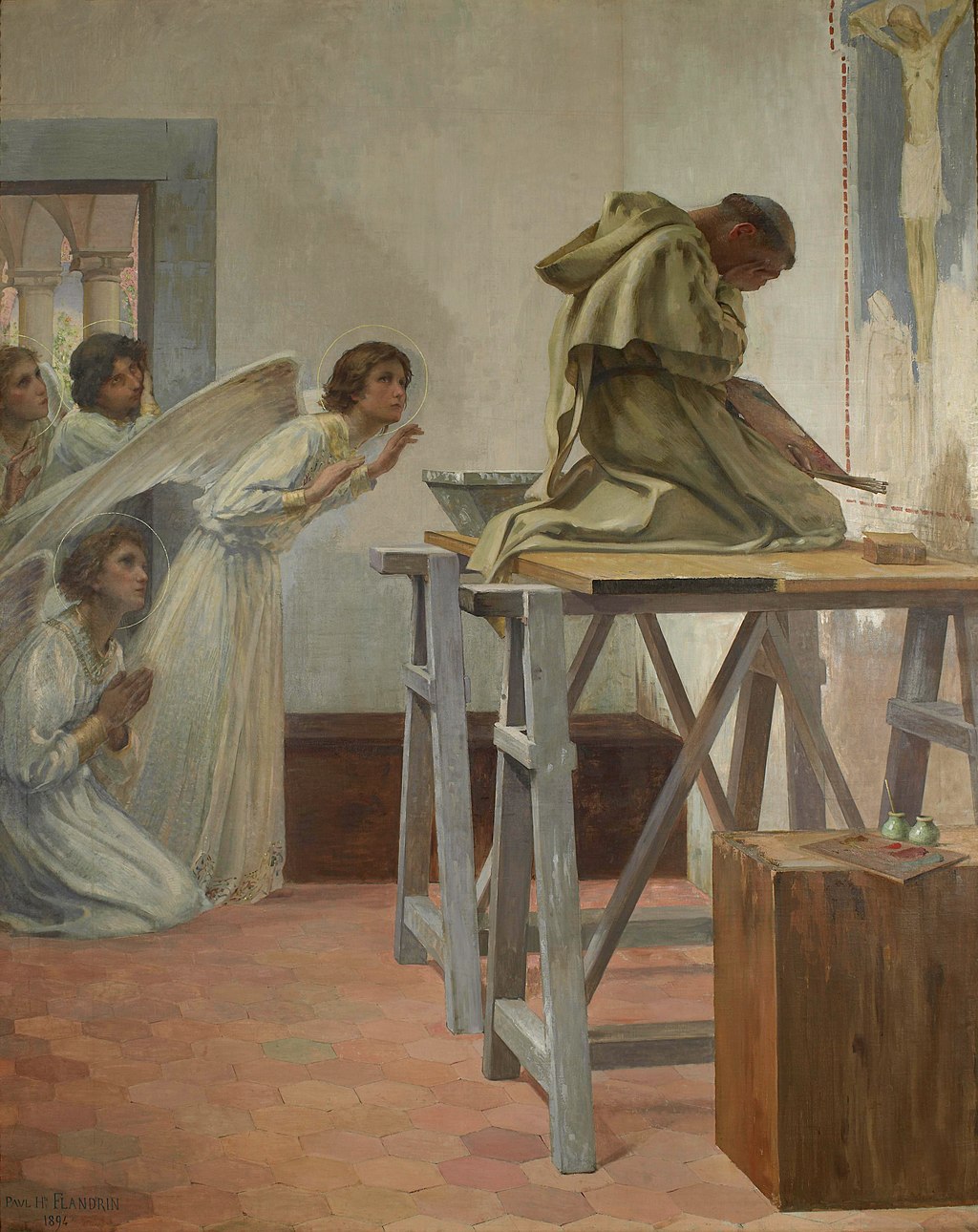
Who do you say that I am?
What sort of image do we paint of Christ in our hearts? Do we paint the true Christ, or a counterfeit Christ?

Reading: Mark 8:27-33
The following homily was preached to the student brothers during Compline. You can listen here or read below:
In reflecting on this Gospel passage, I was reminded of a scene from the movie ‘A Hidden Life’, directed by Terrence Malick. In it, Bl. Franz Jägerstätter has a somewhat one-sided conversation with a church painter, who complains that he paints not the true Christ, but a comfortable Christ; because Christ’s life is a demand, and we don’t want to be reminded of it.
We may not all be competent artists or painters, but the way in which we answer Jesus’ question will affect the sort of image of Christ that we paint in our hearts. Consider the responses given in today’s Gospel passage: John the Baptist, Elijah, one of the prophets. Are these answers not true, in some sense, of Christ? Did Christ not preach repentance as John the Baptist did [Mk 1:14]? Did Christ not raise the dead, as Elijah did [1 Kgs 17:17-24; Mk 5:21-43]? Did Christ not prophesy his own death and resurrection, and does he not speak on behalf of God? So, is Christ not a prophet?
The problem with these answers is that they are not enough. True, Christ is a prophet – he is the archetypal fulfillment of all the prophets. But if our answer reduces Jesus to merely a prophet, then our image of Christ is an impoverished one. Likewise, the same problem exists for us today, for the true Christ and his Gospel will make us uncomfortable. Because we are not yet perfect, and because we constantly fail to imitate God’s love, Christ and his Gospel should constantly confront us and challenge us to repent. And, at times, this can be painful and uncomfortable. And so, sometimes, it is easy to rest in what the Gospel has already accomplished in our lives, and to not allow it to continue to shape and to purify us.
It is too easy to reduce Jesus to a mere spiritual guru, who offers wisdom and insight into the human condition; or a moral teacher, instructing us on how to live a moral life; or a friend, who has done nice things for us. Of course, there are truths in all these answers; and yet, if this is all Christ is to us, then what we have is a counterfeit or a knock-off Christ. If the image of Christ we have in our hearts only includes what we like about him, what makes us comfortable, then what we have is a Christ who is made in our image and likeness – a Christ who cannot save us.
Moreover, if Christ is only defined by what he has said or by what he does for us, then we do not love him for who he is, but only for what he does. Like in our other human relationships, if we do not see the other as a person, but only consider a partial aspect of them, we end up objectifying the other – not as a person to be loved, but as an instrument to be used to satisfy my own needs and desires.
To have the image of the true Christ in our hearts, we must consider the whole person of Jesus – the Messiah, the Son of the living God, the Second Person of the Holy Trinity. To imitate him is to share in his suffering and death, as well as in his glory and resurrection in the next life; to share in his love for the poor and the outcast; to share in his zeal for the conversion of souls; to share in his obedience and docility to the divine will; to love whole-heartedly as he loved, even unto death. In this way, we allow the Holy Spirit to conform us to the image of the Son, so that by our lives we manifest to the world the true image of Christ.
Image: Fra Angelico visited by angels (1894), by Paul-Hippolyte Flandrin. Available via Wikimedia Commons.


